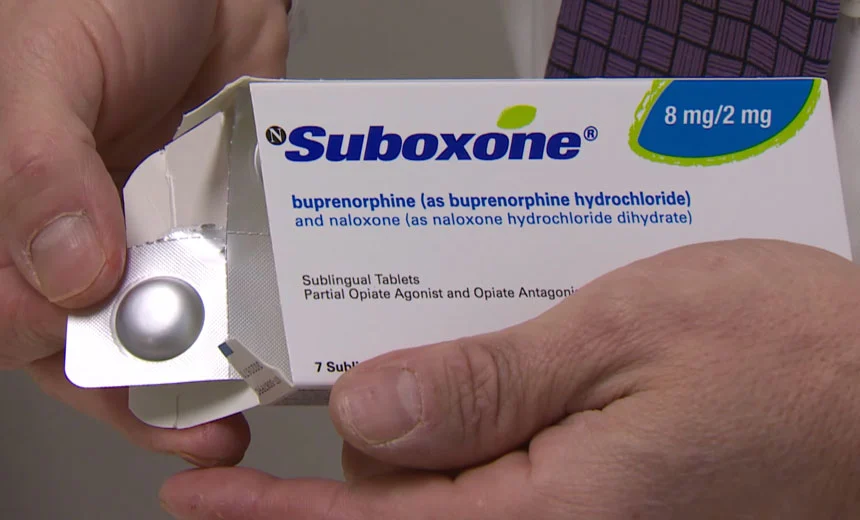Overcoming Opioid Withdrawal Symptoms
If you’ve ever experienced any form of extended substance abuse, you’re probably familiar with the detox process. This process can be especially mentally challenging and, depending on the substance, can yield noticeable physical symptoms as well.
One drug that produces severe pain and significantly more intense withdrawal symptoms is fentanyl. Although opioid withdrawal symptoms are nothing new among those who suffer from opioid drug abuse, there is less known regarding fentanyl addiction.
Keep reading to find out all about managing fentanyl withdrawal symptoms, and finding effective treatment with Catalina Behavioral Health!
What is Fentanyl Abuse?
Fentanyl is far from a new drug. However, fentanyl addiction is still fairly new under the umbrella of substance abuse treatment, and fentanyl withdrawal is still something that leaves much to the imagination.
Opioid withdrawal is an umbrella term used to describe the painful symptoms that manifest during detox after a long period of drug abuse. However, when it comes to fentanyl abuse, because of the drug’s relatively short time as a consistently available substance on the black market, treatment professionals are still learning new things about fentanyl withdrawal.
Fentanyl withdrawal symptoms are similar to those of other users who suffer from opioid drug abuse. However, an active fentanyl addiction seems to produce a far more severe lineup of symptoms that manifest quicker, last longer, and hit harder.
A Brief History of Fentanyl Addiction

Fentanyl is unique in its arrival on the black market and rise to substance abuse domination. Less than a decade ago, many people couldn’t tell you what fentanyl was, and most opioid users had never experimented with the drug.
And the ones that did – purposeful or otherwise, wanted no part of it. As fentanyl overdose cases steadily increased, most users did everything they could to steer clear of batches of heroin laced with the deadly synthetic opioid because of its potency, unpredictability, and potential to cause death.
Why is Fentanyl Flooding into Arizona and the US?
However, fentanyl is much cheaper than its opiate counterpart, heroin, and many wholesale-level dealers quickly learned this. What began as batches of heroin being laced with small amounts of fentanyl to stretch profits steadily segued into almost the complete disappearance of heroin – and a transition to a black market completely dominated by pure fentanyl.
It’s only now – that heroin has been cut out of the equation and opioid users have no choice but to rely on fentanyl to satisfy their craving that medical and substance abuse experts are dealing with a different set of withdrawal symptoms. These withdrawal symptoms, unfortunately, are resistant to traditional forms of substance abuse treatment during the detox segment.
This has led to leaders in the industry searching for new avenues in opioid withdrawal management inside fentanyl addiction treatment.
24 Hour Fentanyl Addiction Hotline
What Is Fentanyl Withdrawal?
Fentanyl withdrawal is the body’s reaction to the detoxification process that takes place when one suddenly abstains from fentanyl abuse after an ongoing substance use disorder. For a user to experience fentanyl withdrawal, they must first become physically dependent on the drug.
Dependency is achieved through engaging in opioid abuse – whether this starts with pain relief through the use of other opioids and transitioning to illicit abuse – or engaging directly in illegal drug use from the start. After an opioid addiction develops, the user will quickly develop an opioid use disorder.
During opioid use disorder, the user actively abuses opioids despite the fact that it might cause injury or death. They begin to neglect other dynamics in life for the sole purpose of obtaining their drug of choice – in this case, fentanyl. Typically, fentanyl abuse does begin with the abuse of other opioids.
What to Expect After Your Last Dose
Once the drug begins to expel itself from the user’s system, fentanyl withdrawal begins to take hold, and withdrawal syndrome develops. This is just the chronic onset of fentanyl withdrawal, a situation in which withdrawal management, fentanyl addiction treatment, and medically-assisted detox are often required.
Through withdrawal management, normally the symptoms of opioid withdrawal can be kept at bay following a last dose of opioids, even if you have been using for years. However, fentanyl withdrawal symptoms persist during many forms of withdrawal management, leading professionals to the discovery that fentanyl is resistant to some of the medications used during medical detox and addiction treatment.
What Are Fentanyl Withdrawal Symptoms?

Although comparable to those of other opioids, fentanyl withdrawal symptoms may be more severe and take less time to manifest. Among the withdrawal symptoms of fentanyl include:
- Frequent yawning and watery eyes
- Muscle pains
- Abdominal cramps
- Nausea
- Irritability
- Restlessness
- Insomnia
- Anxiety
- Increased heart rate/blood pressure
While the symptoms of fentanyl withdrawal are actively plaguing a user, medical detox is typically prescribed during the detox window. Let’s take a look at the timeline of withdrawal from fentanyl.
The Timeline of Fentanyl Detoxification
In the past, many medical professionals conveyed the message that the fentanyl withdrawal timeline was similar to standard opiates like heroin and other pain relievers. However, as professionals in the addiction treatment space leverage larger amounts of data, it seems that pain receptors, the central nervous system, and other variables greatly alter the withdrawal experience.
These more intense symptoms of this powerful drug have the potential to. cause heart failure and other life-threatening challenges – and at the very least, make it difficult to prevent relapse because of the intensity. The following passage provides a fairly accurate depiction of the fentanyl detox timeline, to give you a glimpse into the world of someone experiencing withdrawal after their last dose of fentanyl.
The 1st Day
The onset of Fentanyl withdrawal symptoms is quicker than those of other opioids/opiates. Within 12 hours, you will often experience increased weariness and maybe mild irritation.
As you approach 18 to 24 hours, you may experience increased anxiety as a result of the progression of withdrawal symptoms.
2nd Day
On day two, you will likely begin to experience the full effects of fentanyl withdrawal. You will experience shivers and intense perspiration. You may get nausea and muscular pains, and you will be severely impacted by sleeplessness.
Restless leg syndrome and intense anxiety may begin to manifest paranoia at this point, especially approaching day three. Depression can be tough at this time, and a solid support system is necessary to prevent a recurrence.
Due to the intensity of withdrawal symptoms, most people give up during this stage. If you have ever experienced full-blown fentanyl withdrawal, you likely recognize the benefits of medically assisted detox.
Days 4-10
For up to five or six days you may feel the full brunt of withdrawal. After about a week to ten days, however, the most severe symptoms will begin to diminish.
Although the worst of the physical symptoms have often subsided, the mental side effects last for a considerable amount of time.
Days 10+ and Post Acute Opioid Withdrawals
Post-acute withdrawal symptoms may increase the risk of depression even beyond the 10-day mark and into the subsequent months. It is essential, however, that you do not allow yourself to become disheartened or fall prey to a negative mindset.
The brain requires time to recuperate and return to a normalized way of thinking, feeling, and connecting routine activities with sensations of happiness and joy. Don’t lose hope; the longer you remain sober, the simpler things get from a psychological standpoint.
Medication During and After Medical Detox

Both Suboxone and Sublocade contain the active ingredient buprenorphine. Buprenorphine is used to treat opiate use disorder by alleviating withdrawal symptoms.
Suboxone is administered in the form of a strip that is put under the tongue. Sublocade is administered through injection. Suboxone is administered daily, whereas Sublocade is administered monthly. Suboxone includes buprenorphine and naloxone. Sublocade is composed only of buprenorphine.
Sublocade can only be administered to patients who have begun Suboxone therapy. First, it must be determined whether a person can tolerate buprenorphine.
Both of these drugs are considered maintenance treatments or medication-assisted therapy. This indicates that the body is still reliant on some sort of opiate or opioid.
Individuals who have already undergone detoxification may need treatment for post-acute withdrawal symptoms. But first, users must first successfully undergo suboxone induction – which to many users’ and doctors’ surprise – and dismay – has become increasingly difficult as the fentanyl epidemic becomes more prominent. More on that later.
Licensed Drug Addiction Treatment
Treatment for Post-Acute Withdrawal
Suboxone is a derivative of probuphine. It includes buprenorphine and is used as a maintenance opioid during medication-assisted treatment. However, Vivitrol may be a possibility for those who have already undergone detoxification.
Vivitrol must be taken once fentanyl detoxification has been completed. This implies that all traces of the medication must be eliminated before Vivitrol is introduced to the system.
Vivitrol is helpful at eliminating cravings associated with post-acute withdrawal symptoms when administered as a once-monthly injection. However, before Vivitrol is a possibility, detoxification must be planned.
Vivitrol is also an option after one successfully completes methadone maintenance and detoxes down from their stabilizing dose.
Methadone vs Medical Detox
Instead of a medically-assisted detox, which is becoming increasingly difficult because of the newfound futility of Suboxone (again, more on that later), many users turn to methadone as a maintenance program. While this has been exponentially more successful in recent history, it should still never be considered a long-term solution.
Methadone is an opioid agonist, so it works very well for detoxing from fentanyl use. This means that it fully activates the opioid receptors in the body, helping a user avoid the uncomfortable feelings of withdrawal.
Going back to what we touched on earlier – currently, Suboxone addiction treatment – once thought of as an effective tool against opioid withdrawal management, is seemingly no longer as helpful as it was before. In fact, some users are scared to take it, for fear of precipitated withdrawal, which is the sudden, intense onset of withdrawal symptoms that add up to more than a 6 on the scale doctors use to rate the severity of the withdrawal period.
Suboxone: No Longer Viable for Opioid Use?

Suboxone has been extremely well-reviewed in the past in mitigating a person’s risk of experiencing the most intense effects of withdrawal. However, fentanyl and other street drugs, mostly analogs and other synthetics, have proven resistant to this treatment – at least in the earlier periods of recovery, and are sending users into POW (precipitated withdrawals) long after the proposed warning time.
In the past, users were cautioned not to begin a Suboxone regimen until they had abstained from heroin or other opioids/opiates for at least 12-24 hours. Recently, users have reported POW symptoms even after days without ingesting fentanyl. In the longest reported case, as referenced in a study conducted by medical experts at the University of Pennsylvania in 2022 on social media reports regarding POW, fentanyl, and Suboxone – a user waited 7 days and still reported the onset of precipitated withdrawal.
Does this mean that Suboxone is no longer a viable option for fentanyl? Not exactly.
The Bernase Method and More
There is still hope for users looking to avoid the worst of fentanyl withdrawal. Many professionals are recommending an alternative form of Suboxone induction known as the Bernase method.
This method entails a user introducing extremely small amounts, or microdoses, of Suboxone into the system while alternating fentanyl simultaneously – until the Buprenorphine has enough time to build up in the system and overpower the hold fentanyl has on the opioid receptors in the brain.
This method has proven effective in clinical settings, in addition to personal users conducting their own experimental research at home during attempts to overcome their addictions.
And while it’s promising that there are methods that potentially are effective, it’s important that these are only administered by a licensed medical practitioner. Otherwise, you run the risk of further complicating the situation by mistaking the dosing or some other mishap.
This is what makes medical detox the most practical and effective solution to fentanyl withdrawal and detoxification.
The benefits of a medical detox setting far outweigh the potential negative elements – and there are other alternative forms of medication that help with addiction treatment during with detox period. It’s much safer, and more practical, than cold turkey detox or experimenting with your own doses of other opioid maintenance medications.
24 Hour Addiction Treatment – Call Now!
Seek Relief for Fentanyl Withdrawal at Catalina Behavioral Health
At Catalina Behavioral Health, we have advanced solutions for opioid withdrawal symptoms. Our expert team of licensed medical and substance abuse care professionals is prepared to help you through the most painful segments of detox, offering 24-hour care and monitoring to ensure you remain stable and as comfortable as possible.
The mental benefits are just as beneficial as the physical, as you’re also provided with psychological support and encouragement from our welcoming staff.
For more information on how we can help you detox from fentanyl and experience long-term recovery, contact our Admissions team today!




